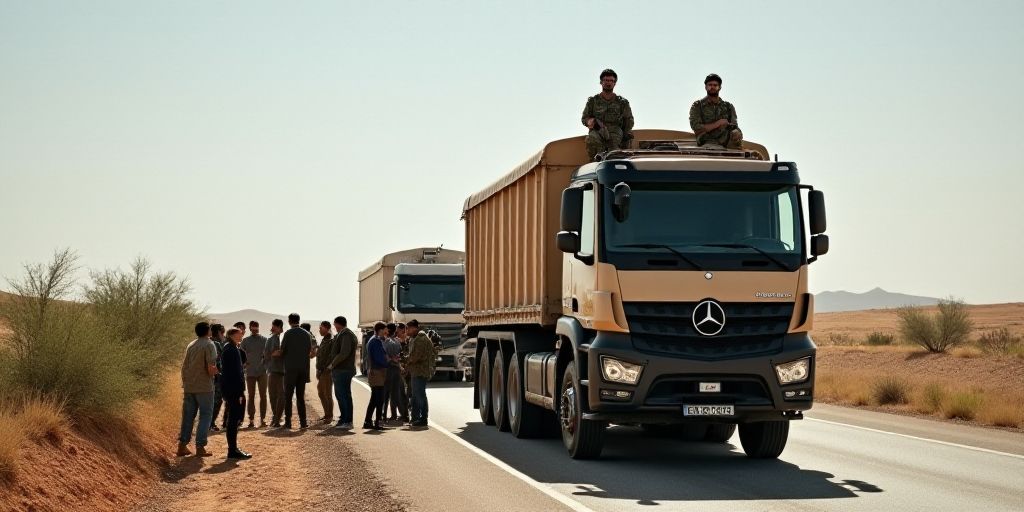Background on Key Figures and Context
The recent clashes in Syria between Bedouin and Druze tribes have resulted in at least 89 fatalities, as reported by a humanitarian organization. The Syrian government has responded by deploying troops in the southern part of the country to address the escalating violence.
Who are the Bedouins and Druze?
The Bedouins are an Arab ethnic group, traditionally nomadic, primarily residing in the Middle East’s desert regions. They are predominantly Sunni Muslims. The Druze, on the other hand, are an Arab ethnoreligious group, following a unique branch of Islam that diverged from other branches centuries ago. They are predominantly found in Syria, Lebanon, and Israel.
Relevance of Ahmad al-Sharaa
Ahmad al-Sharaa is a prominent figure in the Syrian opposition. He led the interim government after the ousting of Bashar al-Assad in December, following nearly 14 years of civil war. The ongoing challenges faced by al-Sharaa’s government, including the recent clashes, highlight the difficulties in establishing stability and unity in a war-torn nation.
Details of the Clashes
The violence erupted on Sunday, following the kidnapping of a Druze vegetable vendor by armed Bedouins who set up roadblocks on the highway connecting Sweida to Damasco. This incident led to further kidnappings and escalated tensions between the two communities.
International Involvement and Concerns
Israel, which has intervened in Syria recently under the pretext of protecting the Druze, announced on Monday that it attacked several Syrian government tanks in the region. Some of these tanks’ members fight alongside the Bedouins. The Syrian Observatory for Human Rights (SOHR) reported these developments.
Casualties and Impact
According to SOHR, the clashes resulted in at least 89 deaths and numerous injuries. The Druze community suffered heavily, with 50 fatalities reported, including 46 combatants, two women, and two children. Eighteen Bedouins, 14 members of security forces, and seven unidentified individuals also perished.
Government Response and Challenges
In response to the violence, the Syrian Ministry of Defense announced the deployment of military units to affected areas, opening safe passageways for civilians, and pledged to “quickly and decisively” end the clashes.
The Syrian Interior Minister, Anas Khatab, stated that the absence of state institutions, military, and security forces is a primary cause of persistent tensions in Sweida.
Historical Context and Ongoing Tensions
The Bedouin and Druze communities have a long-standing rivalry, occasionally marked by violence. The recent clashes are reminiscent of earlier incidents in April between Druze combatants and security forces near Damascus and Sweida, which left over 100 people dead.
In an attempt to prevent further escalation, local and religious leaders reached an agreement to enhance the integration of Druze combatants into power institutions.
International Implications
Israel, which has occupied parts of the Golan Heights—Syrian territory—since 1967, launched several airstrikes following the attacks against the Druze community. These strikes included one near the presidential palace in Damascus, with Israel claiming it acted to protect the Druze.
The Druze population is primarily located in Syria, Lebanon, and Israel. In Israel, approximately 24,000 Druze reside in the occupied Golan Heights, with less than 5% holding Israeli citizenship.
Key Questions and Answers
- Who are the Bedouins and Druze? The Bedouins are nomadic Arab groups primarily residing in Middle Eastern deserts, while the Druze are an ethnoreligious group with unique Islamic beliefs, predominantly found in Syria, Lebanon, and Israel.
- Who is Ahmad al-Sharaa? Ahmad al-Sharaa is a significant figure in the Syrian opposition, leading the interim government after Bashar al-Assad’s ousting in December 2012.
- What triggered the recent clashes? The violence erupted following the kidnapping of a Druze vendor by armed Bedouins, leading to further kidnappings and escalating tensions.
- What is the role of Israel in the conflict? Israel has intervened in Syria, claiming to protect the Druze community. It launched airstrikes against Syrian government forces following the attacks on the Druze.
- What are the historical tensions between Bedouins and Druze? The Bedouin and Druze communities have a long-standing rivalry marked by occasional violence. Recent clashes echo earlier incidents in April between Druze combatants and security forces.






